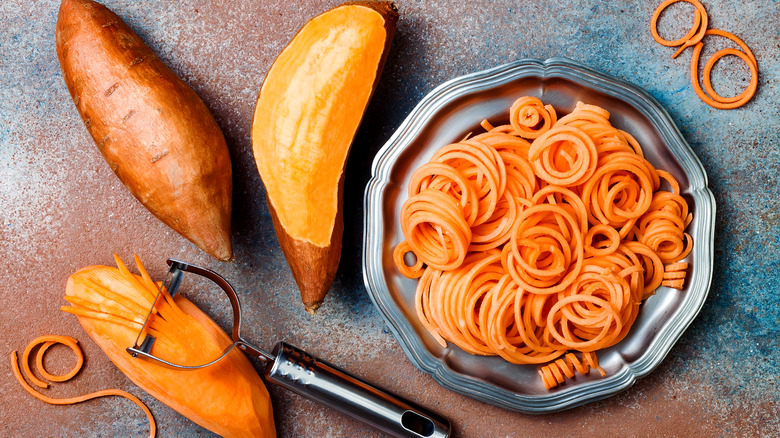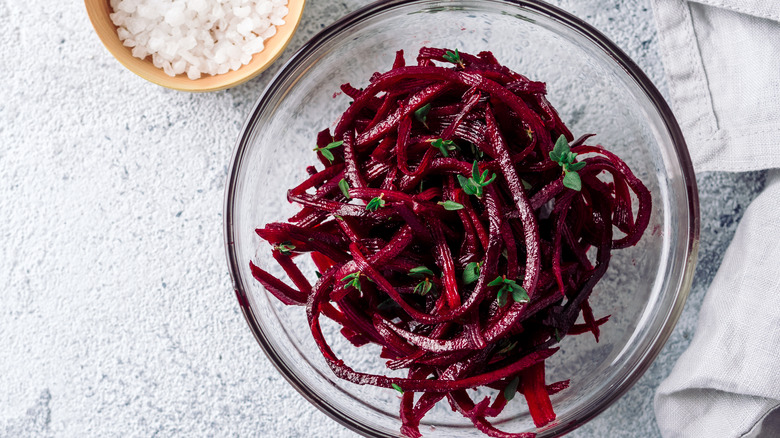How To Spiralize Root Vegetables Into Pasta
Pasta is a versatile ingredient, but the world of noodles becomes much more expansive when you don't focus on just actual noodles. Once you get your hands on a spiralizer, you can start exploring the different ways root vegetables can be enjoyed; veggie noodles provide you with a wealth of tastes and textures, all while getting your nutrients in.
Veggies like zucchini and summer squash are often transformed into pasta, mostly due to their soft and easy to manipulate texture. Perfect zucchini noodles are a great example of how incredible plant pasta can be, so why not explore other avenues? Root vegetables are a little harder, but spiralizing them brings a big payoff. Ingredients like beets or sweet potatoes possess a more impactful flavor than zucchini, making for a more dynamic dish.
To turn your veggies into noodles, cut off both ends and peel away the skin. An automatic countertop spiralizer works best for root vegetables since you won't have to do much — just place them on the machine and let it work its magic. If you're using a handheld tool, or a countertop spiralizer with a handle, you'll need to put a little more muscle into cutting the vegetables because they're hardy. Even without a spiralizer, root veggies can be turned into pasta. A julienne peeler or mandoline with a julienne blade works just fine. A regular peeler can be used too, but you'll have to cut the peeled vegetables into thin slices to mimic noodles, which will be a bit more difficult.
How should you cook the veggie noodles?
Once they're spiralized, there are different ways to turn your root vegetables into something reminiscent of pasta, though the methods may not be the same across the board. For spicy spiralized rutabaga "pasta," recipe developer Miriam Hahn opts to saute the veggie noodles until they soften. Afterwards, they're tossed with a fiery tomato sauce that complements the rutabaga's bitter sweetness.
Sauteeing the "noodles" works for beets, as well. It doesn't take that long for the hardness to give way to a softer texture, although the beets remain somewhat al dente. It's possible to steam the spiralized beets, instead. This way, they mirror the tenderness of actual pasta. You can either use a steam basket or cover the bottom of a pot with water and place the vegetables in. Beets have an earthy, sweet flavor that works well with bright and nutty ingredients, as seen in this bewitching beet ravioli recipe. Toss your sauteed spiralized beets with lemon and garlic, or goat cheese, balsamic vinegar, and walnuts.
Beet noodles are also great when roasted, but we love to reserve this cooking method for sweet potatoes. In the oven, spiralized sweet potatoes caramelize beautifully while also tenderizing into a consistency worthy of the pasta title. Since they're thinner, they only take around 10 minutes to cook. Serve roasted spiralized sweet potatoes with a lemon brown butter sauce and parmesan for a quick, hearty dinner.

